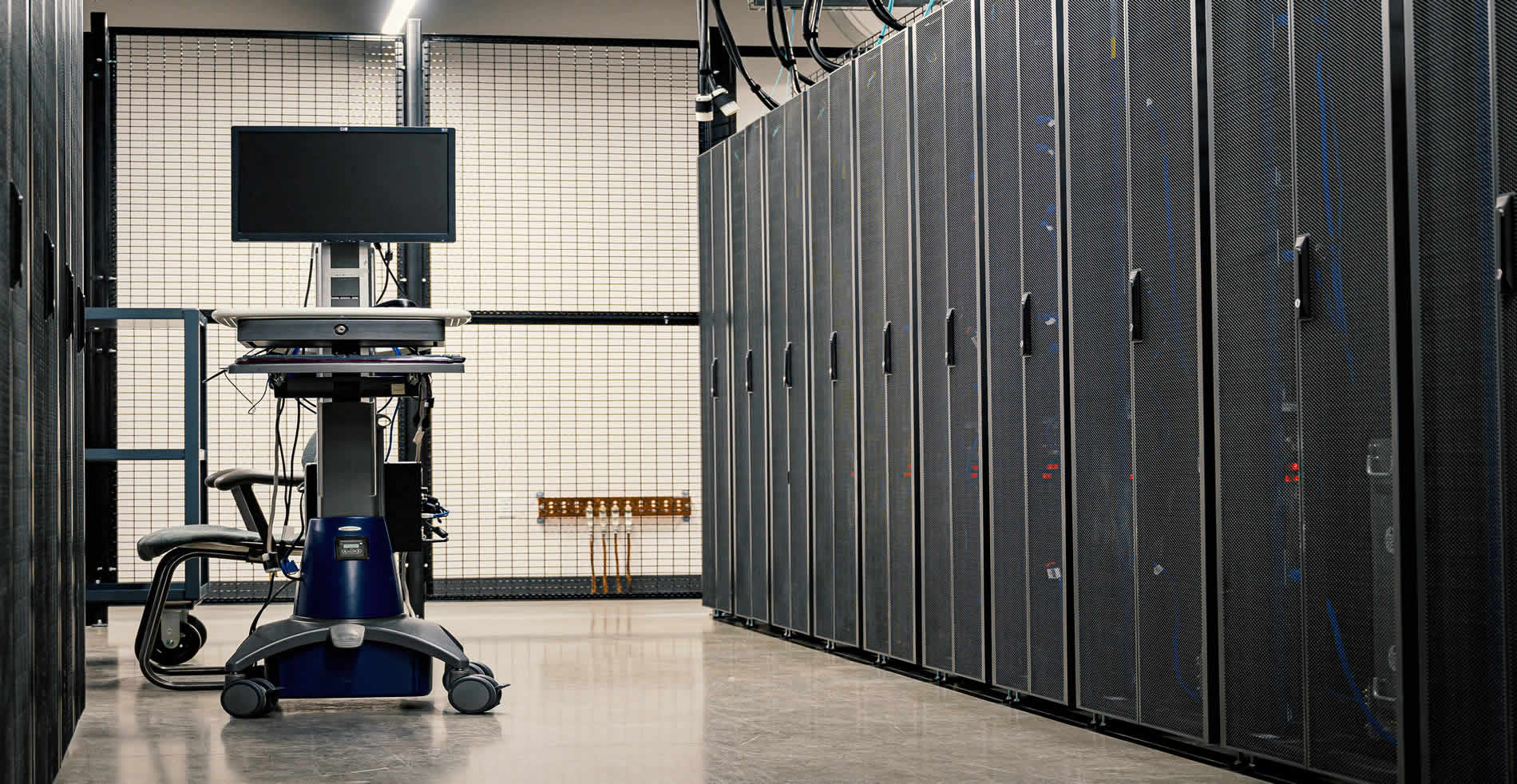
Data Center Design & Development
Designing a data center involves various components and considerations to ensure efficiency, reliability, and scalability. Here's a general outline of the key elements we consider when designing a data center:
Space & Layout
Choose a suitable location based on factors like accessibility, proximity to users, good bandwidth, power availability, natural disaster risks, and environmental conditions. Determine the amount of space required for servers, networking equipment, power distribution, cooling systems, and other infrastructure. Plan for a layout that ensures proper airflow, security, and ease of maintenance.
Power Infrastructure
Estimate power requirements and ensure redundant power sources for uninterrupted operation. Include uninterruptible power supplies (UPS) and backup generators. Implement power distribution units (PDUs) for efficient power delivery to racks and equipment.
Networking Infrastructure
Design a robust network infrastructure with redundancy and high-speed connectivity. Include switches, routers, load balancers, and firewalls. Choose appropriate server racks and cabinets to organize and house equipment. Consider factors like rack density, cable management, and scalability. Plan cable routing and management to prevent clutter and ensure proper airflow. Use high-quality cabling for reliability and performance.
Scalability & Monitoring
Design the data center to accommodate future growth and expansion. Plan for modular components that can be easily added or upgraded. Implement remote monitoring and management tools to track performance, temperature, power usage, and other critical metrics. Utilize data analytics to optimize efficiency and troubleshoot issues.
Disaster Recovery & Backup
Establish a comprehensive disaster recovery plan that includes off-site backup and replication. Test and update the plan regularly. Incorporate redundancy at all levels (power, networking, storage) to minimize downtime. Implement failover mechanisms and load balancing for high availability.
Security & Safety
Implement physical security features like access controls, biometric authentication, surveillance cameras, and security personnel. Set up fire suppression systems and environmental monitoring. Install fire detection and suppression systems to protect against data loss due to fire. Ensure compliance with safety regulations and standards.
Environmental Consideration
Emphasize energy efficiency and consider green technologies to reduce the carbon footprint of the data center. Follow industry best practices for minimizing e-waste.
Documentation
Maintain detailed documentation of the data center design, including layouts, diagrams, equipment specifications, and configurations.
We in constant reminder that every data center design will be influenced by specific business needs and requirements. It’s important to work with a team of experts, including architects, engineers, and IT professionals, to create a tailored design that meets your organization’s unique needs.
